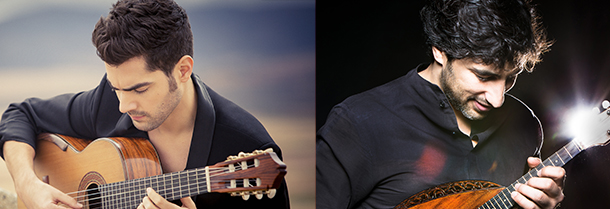Tag: Isaac Albéniz
-

-

PROGRAM NOTES: MILOŠ AND AVI AVITAL
Johann Sebastian Bach English Suite No. 2 in A minor: Prelude | Well-Tempered Clavier 1: Fugue in C minor | Concerto in D minor (after Marcello): Adagio | Partita No. 2 in C minor: Capriccio In Bach’s time, the instrument closest to the sound world of the guitar and mandolin was the lute. Bach wrote…
-

PROGRAM NOTES: JAVIER PERIANES
Franz Schubert Piano Sonata in A Major D 664 The salubrious effects of country air on the mind and spirits of the vacationing composer are well known. Witness Schubert’s wonderfully relaxed and lyrical Sonata in A Major D 664 composed in 1819 during a summer sojourn in Steyr, a riverside provincial town set amid the…

